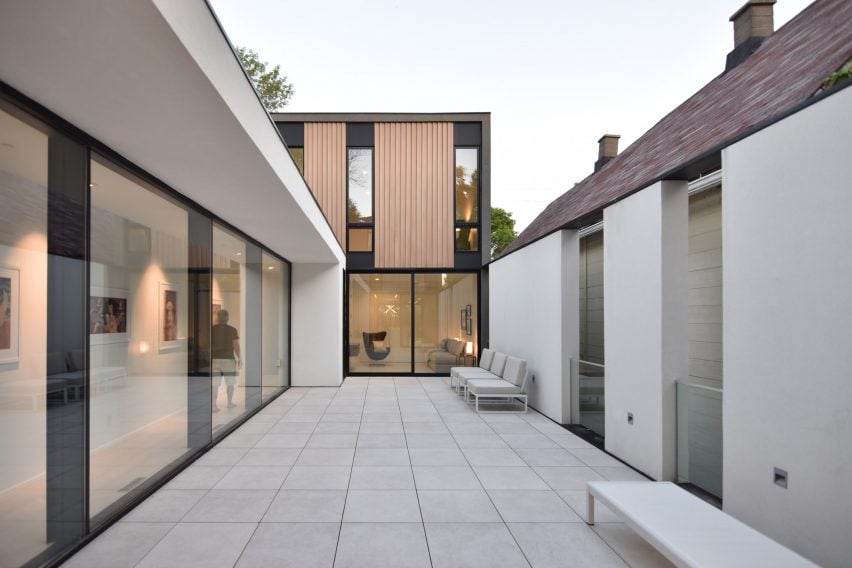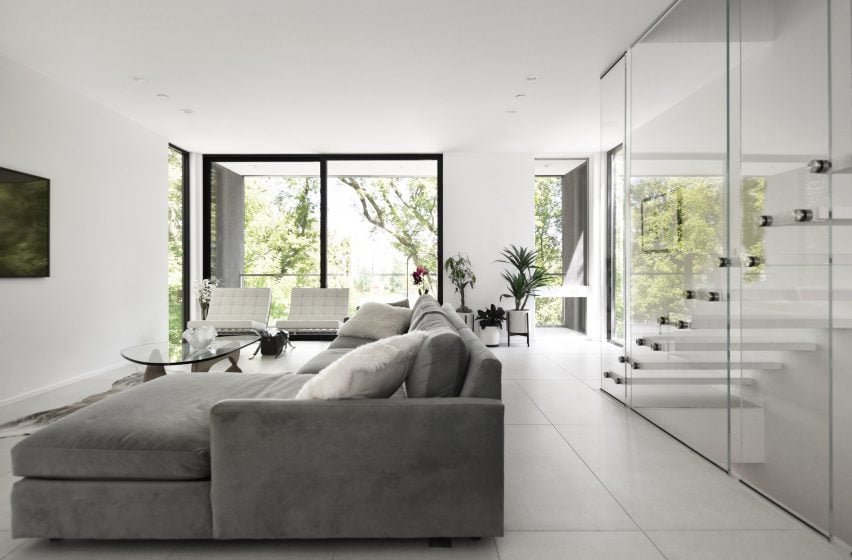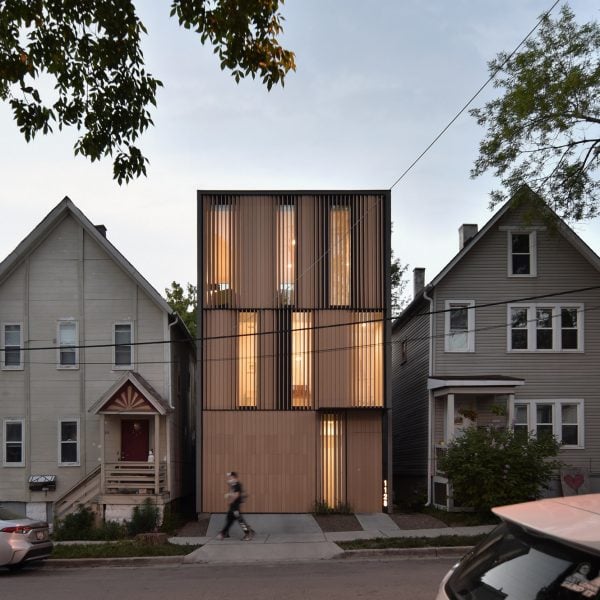Wood and metal louvres line the front of a slender home in Wisconsin by Johnsen Schmaling Architects that was built on a vacant lot in a way that reformulates the “typological conventions” of infill architecture.
The house is located on a 24-foot-wide (seven-metre) parcel in Milwaukee’s Lower East Side, a diverse neighbourhood known for its affordable housing options and eclectic mix of residents.
The client, described as a “lifelong urban dweller”, set out to build his first home and acquired the parcel from Milwaukee’s Department of City Development, which had owned the property since demolishing an abandoned house there two decades earlier.
For the vacant lot, local studio Johnsen Schmaling Architects conceived a three-storey, rectangular box that stretches nearly the full length of the site. A central portion of the home is cut away to form an internal courtyard.

The building totals 2,700 square feet (251 square metres), and its height matches the neighbouring structures.
“The building is a long, narrow volume tightly sandwiched between two century-old homes and reimagines the typological conventions of urban infill dwellings with a respectful but unapologetically contemporary addition to the area’s aging housing stock,” the team said.

For the street-facing facade, the team took inspiration from window drapes commonly found on urban homes in America.
Envisioned as a “playful abstraction” of these ubiquitous drapes, the team designed a screen of vertical louvres made of wood and aluminium. The louvres were installed at gradually rotating angles to help animate the facade.
“The screen’s various degrees of openness respond to the building enclosure behind it, transforming seamlessly from visually most porous in glazed areas to entirely impenetrable where solid walls or the garage door are located,” the studio said.

The screen provides privacy from the public realm while also acting as a sun-shading device, mitigating heat gain during warm months.
“High-performance glazing and an integrally coloured, three-coat cementitious stucco system round out the deliberately subdued exterior material palette,” the architects said.
Within the home, one finds bright rooms and a division between social and private areas.
The ground level – which was designed to meet city requirements for on-site parking – contains an entry vestibule, a garage, and mechanical infrastructure. The back portion holds a family room that opens toward a series of terraced patios.

Atop this base level are a pair of two-storey volumes organised around the internal courtyard and connected by a glazed corridor that doubles as a gallery.
The volume closest to the street encompasses two bedrooms, one on each level, while the rear volume holds a mix of communal and private spaces.
In the rear volume, the first floor has an “open living hall” with space for cooking, dining and lounging. The hall looks toward the internal courtyard on one side and the Milwaukee River on the other.

Above the living hall are a home office and primary bedroom, which are accessed via a glass-walled stairwell.
For interior finishes, the team chose white and grey tones that work in tandem with the natural light flowing into the house. The kitchen features walnut cabinetry, adding warmth to the space and announcing its role as the home’s “social epicenter”.

Johnsen Schmaling Architects was started in 2003 by architects Brian Johnsen and Sebastian Schmaling. Other projects by the studio include a Wisconsin cabin with blackened-pine cladding and wide-span glass doors, and an urban infill project in Sacramento featuring six modest-sized homes with multi-coloured facades.
The photography is John J. Macaulay.

